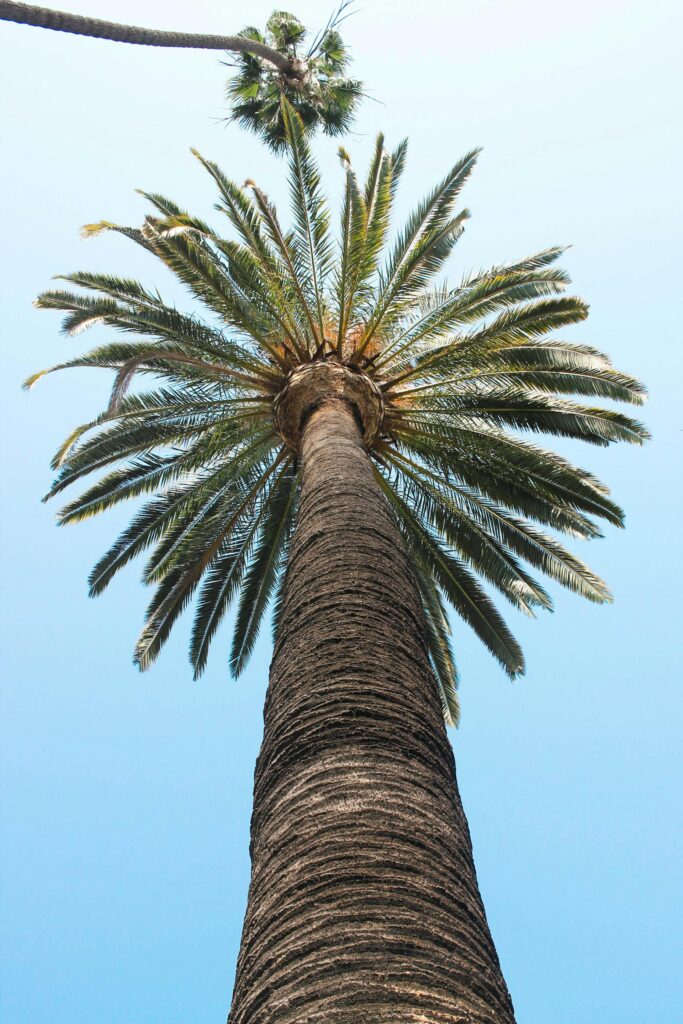Palm trees are iconic symbols of tropical landscapes, particularly in sunshine-filled locales like Florida. However, while their swaying fronds might steal the show, the shedding bark of palm trees holds its own unique ecological story. This article aims to explore the reasons behind palm tree bark shedding and its ecological significance in Florida’s diverse environment, providing insights for plant enthusiasts and businesses like For Plants.
Understanding Palm Trees: A Brief Overview
Before diving into the specifics of bark shedding, it’s essential to understand what makes palm trees unique. Unlike typical trees, palms belong to the Arecaceae family, characterized by their long, unbranched trunks and large, evergreen leaves.
The Anatomy of a Palm Tree
Palm trees have a distinct structure, with their trunks comprised of fibrous bundles rather than traditional wood. This unique anatomy plays a vital role in their growth and shedding patterns.
Why Do Palm Trees Shed Their Bark?
The shedding of palm tree bark is a natural process driven by several factors. Understanding these can help gardeners, landscapers, and plant businesses like For Plants provide better care and maintenance for these tropical beauties.
1. Growth and Development
As palm trees grow, their trunks expand, necessitating the shedding of old, dead bark layers to make way for new growth. This process is akin to how animals molt, allowing the tree to maintain its health and structural integrity.
2. Adaptation to Climate
In regions like Florida, where temperatures can soar, shedding bark helps palm trees regulate heat and moisture. The removal of old bark layers improves air circulation around the trunk, reducing the risk of fungal infections and pest infestations.
3. Pest and Disease Management
Shedding bark can also be a defense mechanism against pests and diseases. By regularly discarding old bark, palm trees minimize habitats for insects and pathogens, thereby reducing the likelihood of infestations.
“Shedding bark is a natural defense mechanism that helps palm trees thrive in challenging environments.” – For Plants Expert
Ecological Implications of Bark Shedding
The shedding of bark from palm trees has several ecological benefits, contributing to the overall health of the ecosystem in which they reside.
Nutrient Recycling
Fallen bark decomposes over time, enriching the soil with organic matter and nutrients. This process supports the growth of other plants and microorganisms, fostering a vibrant and diverse ecosystem.
Habitat Creation
As bark accumulates on the forest floor, it provides shelter and resources for various animals, including insects and small mammals. This creates a complex web of interactions that enhance biodiversity in the area.
Managing Palm Tree Bark in Urban Landscapes
In urban settings like Florida’s bustling cities, managing palm tree bark is crucial for both aesthetic and safety reasons. Here are some tips for maintaining palm trees effectively:
Regular Maintenance
Regular trimming and removal of dead bark can prevent potential hazards and maintain the pristine appearance of landscaped areas. For Plants offers specialized services to cater to these needs, ensuring palm trees remain healthy and visually appealing.
Promoting Tree Health
Ensuring palm trees have adequate water, nutrients, and space to grow can minimize excessive bark shedding and promote overall health. This proactive approach helps prevent potential issues before they arise.
The Role of Palm Trees in Florida’s Ecosystem
Palm trees are integral components of Florida’s ecosystem, offering numerous benefits beyond their aesthetic appeal.
Carbon Sequestration
Palm trees play a role in capturing and storing carbon dioxide, contributing to climate change mitigation efforts. Their extensive root systems also aid in soil stabilization and erosion prevention.
Cultural Significance
Beyond their ecological contributions, palm trees hold cultural and economic significance in Florida, symbolizing the state’s tropical allure and attracting tourists worldwide.
Understanding why palm trees shed their bark and the ecological implications of this process provides valuable insights for plant enthusiasts and businesses like For Plants. Recognizing the natural and beneficial aspects of bark shedding can enhance the way we care for these iconic trees, ensuring they continue to thrive in Florida’s vibrant landscapes.
By incorporating sustainable practices and appreciating the unique characteristics of palm trees, we can support their continued growth and ecological contributions, creating a harmonious balance between urban development and natural ecosystems.



